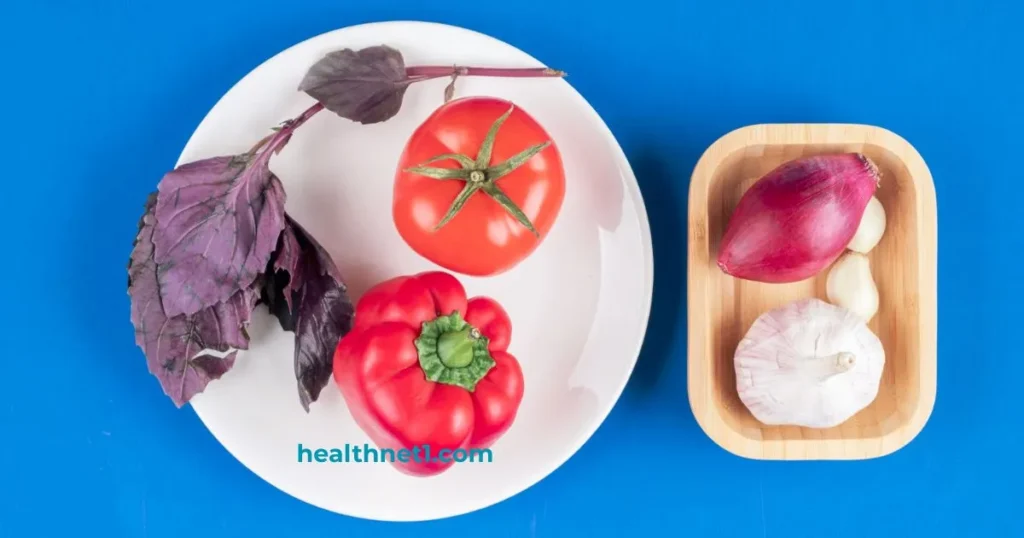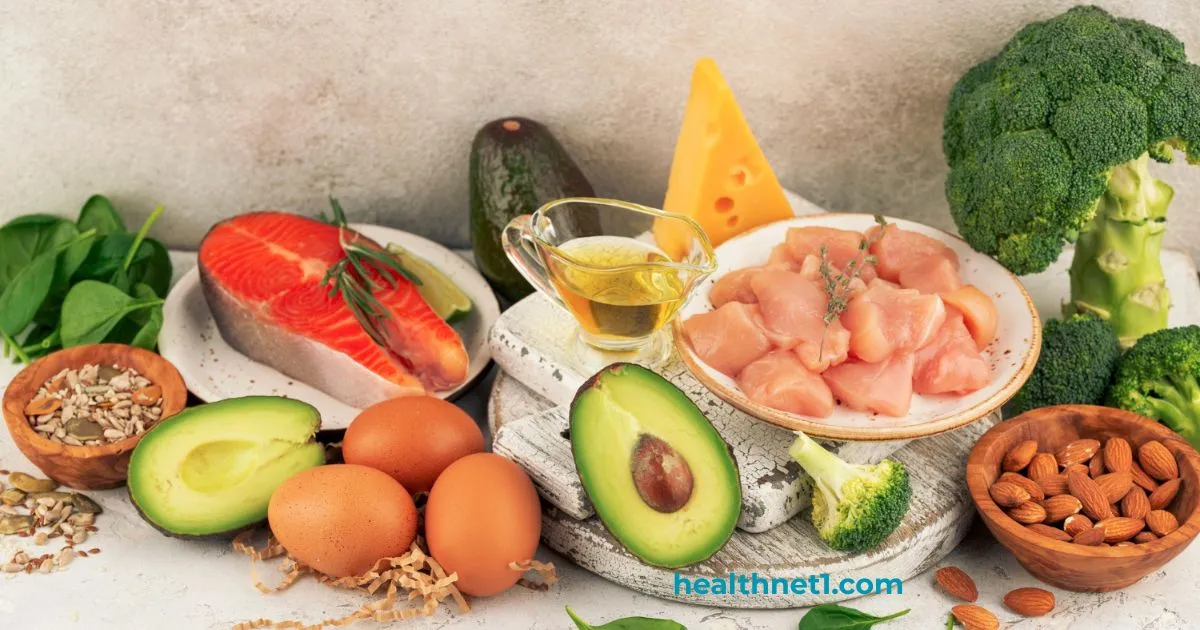Top 10 Non Inflammatory Foods Backed by Science
Imagine waking up every morning with less stiffness in your joints, a clearer mind, and steady energy that lasts throughout the day. It’s not a miracle pill or a fad diet—it’s the power of the food you eat. Inflammation is your body’s natural response to injury or infection, but when it becomes chronic, it silently contributes to conditions like arthritis, heart disease, diabetes, and even depression.
The good news? You have the power to fight back with what you put on your plate. By choosing non inflammatory foods—real, nutrient-rich options backed by science—you can help your body find balance, reduce internal stress, and support long-term health.
In this article, you’ll explore the top 10 non inflammatory foods, learn how they work, and discover simple ways to add them to your daily meals.
Table of Contents
What Are Non Inflammatory Foods and Why They Matter
Inflammation isn’t always a bad thing. When you cut your finger or catch a cold, your immune system triggers inflammation to protect and heal you. But when inflammation lingers—often due to stress, poor diet, or lifestyle habits—it becomes chronic.
Chronic inflammation is a silent enemy, linked to many health issues such as heart disease, diabetes, obesity, and even certain cancers, according to research from the Cleveland Clinic. The foods you eat can either fuel that inflammation or calm it down.
Non inflammatory foods help lower oxidative stress, balance blood sugar, and supply your body with antioxidants and healthy fats that counteract inflammatory molecules.
Here’s a simple comparison table to guide you:
| Inflammatory Foods | Non-Inflammatory Alternatives |
| Processed meats | Fatty fish (salmon, sardines) |
| Refined carbs | Whole grains (quinoa, brown rice) |
| Sugary drinks | Green tea, lemon water |
| Fried foods | Steamed vegetables |
| Margarine | Extra virgin olive oil |
Top 10 Non-Inflammatory Foods (Backed by Science)
Each of these foods is supported by clinical research and can play a major role in reducing chronic inflammation.
1. Fatty Fish (Salmon, Sardines, Mackerel)
When it comes to fighting inflammation naturally, fatty fish lead the way. They’re rich in omega-3 fatty acids (EPA and DHA), which have been shown in numerous studies to reduce markers like C-reactive protein (CRP).
According to Harvard Health Publishing, omega-3 fats help lower inflammation linked to heart disease and arthritis. Eating fish two to three times a week can make a noticeable difference in your overall health.
How to enjoy it:
- Grill or bake salmon with lemon and herbs.
- Add canned sardines to salads or whole-grain toast.
- Use mackerel in sandwiches for a high-protein lunch.
2. Leafy Greens (Spinach, Kale, Swiss Chard)
Leafy greens are packed with antioxidants, vitamins A, C, and K, and minerals that protect your cells from oxidative stress. Research from the Cleveland Clinic shows that people who consume more leafy greens have lower levels of inflammatory markers.
Add them to your meals by:
- Blending kale or spinach into smoothies.
- Using leafy greens as the base for salads.
- Sautéing them lightly with olive oil and garlic.
3. Berries (Blueberries, Strawberries, Raspberries)
Berries are tiny but mighty. Their vibrant colors come from anthocyanins, plant compounds that fight inflammation and oxidative stress.
Studies published in PubMed show that regular berry consumption improves blood vessel health and lowers inflammation.
How to include them:
- Add fresh berries to oatmeal or yogurt.
- Blend them into a smoothie.
- Snack on them instead of sweets.
4. Extra Virgin Olive Oil
Often called “liquid gold,” extra virgin olive oil is central to the Mediterranean diet, one of the healthiest diets in the world. It contains oleocanthal, a natural compound with anti-inflammatory effects similar to ibuprofen.
Harvard research notes that people who regularly use olive oil instead of butter have significantly lower CRP levels.
Quick tips:
- Use it as a salad dressing or drizzle over vegetables.
- Add to pasta, soups, or cooked grains for extra flavor.
5. Turmeric (Curcumin)
Turmeric, the golden spice, contains curcumin, one of nature’s most powerful anti-inflammatory agents. Studies indexed on PubMed show that curcumin may help manage conditions like arthritis and metabolic syndrome by reducing inflammation and oxidative stress.
To enhance absorption, pair turmeric with black pepper, which contains piperine.
Try it this way:
- Stir turmeric into soups or stews.
- Add to your morning smoothie.
- Make a “golden milk” with warm almond milk, turmeric, and cinnamon.
6. Green Tea
Green tea isn’t just refreshing—it’s also a powerful anti-inflammatory drink. It’s rich in EGCG (epigallocatechin gallate), a plant compound that helps lower inflammatory cytokines and protect cells from damage.
According to Harvard Health, regular green tea drinkers have reduced risks of heart disease and cognitive decline.
Best ways to enjoy:
- Drink two to three cups daily.
- Add a squeeze of lemon for extra antioxidants.
- Choose matcha for an even higher concentration of EGCG.
7. Nuts (Walnuts, Almonds, Pistachios)
Nuts are small packages of anti-inflammatory nutrients—healthy fats, vitamin E, and magnesium. Studies from the Journal of the American College of Cardiology show that nuts help lower inflammatory markers such as CRP and IL-6.
Healthy ways to eat them:
- Snack on a small handful daily.
- Add chopped nuts to yogurt or oatmeal.
- Use nut butter as a spread on whole-grain bread.
8. Tomatoes

Tomatoes are loaded with lycopene, a carotenoid known for its anti-inflammatory and antioxidant properties. Cooking tomatoes enhances lycopene absorption, making tomato sauce a great choice.
Tips:
- Use tomato paste in soups and stews.
- Add fresh tomatoes to salads.
- Opt for cooked sauces to get more lycopene.
9. Garlic and Onions
Garlic and onions do more than flavor your food—they fight inflammation from the inside out. Both contain sulfur compounds that enhance immune function and regulate inflammatory responses.
A study in Food & Function Journal found that garlic consumption reduces inflammatory cytokines.
Ways to add them:
- Use raw or roasted garlic in dressings.
- Add onions to stir-fries, soups, or sauces.
10. Whole Grains (Oats, Brown Rice, Quinoa)
Unlike refined grains, whole grains retain their bran and germ, providing fiber and antioxidants that reduce inflammation. Fiber helps lower CRP levels and maintains balanced blood sugar.
Healthy options:
- Start your day with oatmeal topped with berries.
- Use quinoa or brown rice as a side dish.
- Choose whole-grain bread and pasta.
Additional Tips for an Anti-Inflammatory Lifestyle

Your diet is only part of the puzzle. Other lifestyle habits play an important role in managing inflammation.
- Stay hydrated: Water and green tea are your best choices.
- Exercise regularly: Even walking 30 minutes a day helps reduce inflammation.
- Sleep well: Poor sleep increases inflammatory markers.
- Manage stress: Meditation, deep breathing, or yoga can help calm your nervous system.
Sample Anti-Inflammatory Meal Plan
| Meal | Example | Key Anti-Inflammatory Ingredient |
| Breakfast | Oatmeal with blueberries and walnuts | Fiber, antioxidants, omega-3s |
| Lunch | Quinoa salad with kale, olive oil, and tomatoes | Lycopene, vitamin K |
| Snack | Green tea with almonds | EGCG, vitamin E |
| Dinner | Grilled salmon with steamed spinach | Omega-3s, vitamin K |
| Evening | Golden milk with turmeric | Curcumin |
FAQ – Non Inflammatory Foods
What are the best non inflammatory foods to eat every day?
Foods like fatty fish, leafy greens, olive oil, and berries are excellent daily choices for reducing inflammation naturally.
Can eating non inflammatory foods help with arthritis or chronic pain?
Yes. Research from the Cleveland Clinic and Harvard Health suggests omega-3s and curcumin can ease joint discomfort and inflammation.
How fast can diet reduce inflammation?
You may begin noticing improvements within two to four weeks, depending on consistency and overall diet quality.
What foods should I avoid to prevent inflammation?
Avoid processed meats, sugary snacks, fried foods, and refined carbs. These can trigger inflammatory responses.
Can you combine anti-inflammatory and antifungal diets?
Yes! Foods like garlic, turmeric, and olive oil support both.
Conclusion: Your Path to a Calmer, Healthier Body
You don’t need to overhaul your life overnight to reduce inflammation—small, steady changes in your diet can lead to lasting benefits. By adding these top 10 non-inflammatory foods to your meals, you’re giving your body the tools it needs to heal, restore balance, and protect itself from disease.
Start simple: add a serving of fatty fish twice a week, swap refined carbs for whole grains, and drizzle olive oil over your veggies. These mindful choices can help you feel lighter, more energized, and in control of your health again.
Explore more wellness and nutrition insights at HealthNet1 and begin your anti-inflammatory journey today.

